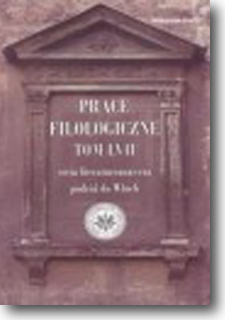„Coć wymyślili ci heretykowie?” Nowe źródła do fraszki {O Łazarzowych księgach} (II 52) Jana Kochanowskiego, tłum. Michał Mrugalski
“What did these heretics invent?” - New sources for Jan Kochanowski’s fraszka II 52 ({On the books of Lazarus})
Author(s): Jörg SchulteSubject(s): Language and Literature Studies
Published by: Wydział Polonistyki Uniwersytetu Warszawskiego
Keywords: literatura polska; fraszka; Jan Kochanowski; Polish literature; epigram; Jan Kochanowski
Summary/Abstract: Kochanowski’s longest Polish epigram has the title {On the books of Lazarus} ({O Łazarzowych księgach}). For these books - which were allegedly written by St. Lazarus after his return from hell and then passed on from generation to generation, being read only by philosophers shortly before their death - the article presents two sources. The first is the dialogue {Gli Capricci del Bottaio} ({The Fancies of a Cooper}) published in 1546 by Giambattista Gelli, in which a book written by St. Lazarus is passed on from one pope to another. The bad popes interpreted its empty pages as a hint that there is no other world, whereas the good popes concluding that as nothing can be said about the other world, it might be wise to lead a pious life. The second source is an entry in a Byzantine library catalogue () discovered by the German humanist Johannes Hartungus and published in 1578. Kochanowski must have known both of the unrelated sources. However, the clue of the epigram is that his own three epigram books have the printer’s device of Łazarz Andrysowic and the words {Ex officina Lazari} on the title page. Writing on the books of Lazarus and their hidden secrets when he, just as Gelli’s St. Lazarus, felt that his end was already close, Kochanowski speaks at the same time about his own {Fraszki}.
Journal: Prace Filologiczne
- Issue Year: 2009
- Issue No: 57
- Page Range: 49-66
- Page Count: 18
- Language: Polish

